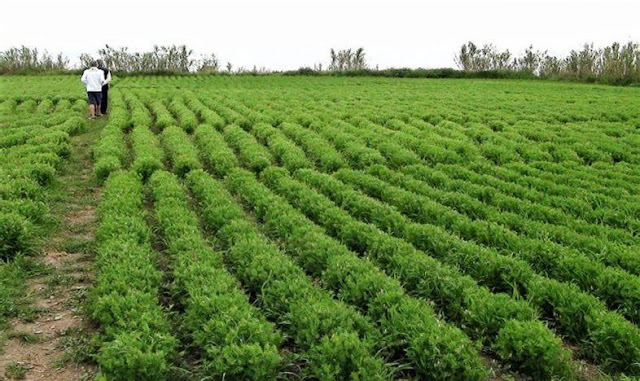Lentils, locally known as kamande, are highly nutritious legumes that have gained popularity in Kenya due to their health benefits and profitability. Lentils are a rich source of protein, fiber, and essential vitamins and minerals, making them a staple in many Kenyan households. This crop thrives in hot, dry areas, and farmers in various regions of Kenya are increasingly venturing into lentil farming as a way to diversify their agricultural output and meet the growing demand for these legumes.
Ideal Regions for Lentil Farming in Kenya
Lentils grow best in areas that experience warm temperatures and low humidity. In Kenya, regions such as Siaya, Wajir, Garissa, Ukambani, Kisumu, Kajiado, and the Coastal region are ideal for lentil farming due to their hot climates and well-drained soils. These areas provide the right conditions for the growth and development of lentil plants, which require consistent sunshine and minimal moisture to thrive.
Varieties of Lentils Grown in Kenya
There are several varieties of lentils cultivated in Kenya, each with its own unique characteristics and uses:
- Brown Lentils: These are the most common variety, known for their mild flavor and firm texture. They are often used in soups and stews.
- Yellow and Red Lentils: These varieties cook quickly and are commonly used in making dals and purees. They are split and tend to lose their shape when cooked.
- Green Lentils: Green lentils have a slightly peppery flavor and hold their shape well after cooking, making them ideal for salads and side dishes.
- Black Lentils: Also known as beluga lentils, they are small, firm, and retain their shape during cooking. They are prized for their unique appearance and rich taste.
Ecological Requirements for Growing Lentils
Lentils have specific ecological requirements that need to be met for optimal growth:
- Sunshine: Lentils require at least 6 hours of sunlight daily for healthy growth.
- Soil: The crop thrives in loose, well-drained soils with a pH level between 6.0 and 6.5. Proper drainage is crucial to prevent root rot and other soil-borne diseases.
- Temperature: The ideal temperature for lentil growth ranges between 25°C and 35°C, making Kenya’s hotter regions perfect for lentil farming.
Land Preparation
Proper land preparation is key to successful lentil farming. The land should be well-ploughed early before the onset of rains to allow the soil to settle. Given the tiny nature of lentil seeds, the soil should be finely prepared to ensure even distribution during planting. Loose soil also makes it easier for seedlings to emerge.
Planting Lentils
Lentils are propagated by seeds, and planting should be timed with the onset of rains for best results. Here’s a step-by-step guide to planting:
- Drill lines 1-2 inches deep with a spacing of 45 cm between the rows.
- Sow the seeds in the lines at a spacing of 1 inch from each other, ensuring they are not too close together.
- Cover the seeds with about 1 inch of soil to protect them from being washed away by rain.
- About 12-15 kgs of seeds are needed per acre of land.
After planting, the seeds will begin to germinate in approximately 10 days. Regular monitoring during this period is crucial to ensure healthy seedling growth.
Pests and Diseases
While lentils are relatively resilient, they are susceptible to a few common pests, such as:
- Aphids: These small insects suck sap from the plant, weakening it and reducing yield.
- Thrips: Thrips cause damage by feeding on the plant’s leaves and stems, leading to stunted growth.
- Worms: Various types of worms, including caterpillars, can feed on the foliage, affecting the plant’s health.
To control these pests, farmers are advised to use recommended pesticides and to practice crop rotation to minimize the spread of pests and diseases.
Though lentils are not easily attacked by diseases, they may be affected by:
- Root Rot: Caused by poorly drained soils, it leads to the decay of the plant’s root system.
- Blight: This fungal disease affects the leaves and stems, causing them to wither.
- White Mould: A fungal infection that can damage the stems and leaves of the plant.
To manage these diseases, farmers should pinch out the affected areas and maintain proper field hygiene.
Harvesting Lentils
Lentils typically take about 80 days from planting to be ready for harvest. Farmers can begin harvesting once the pods have turned brown and dry. Lentils are hand-harvested, and care should be taken to avoid damage to the delicate seeds.
On average, an acre of land yields 600-800 kgs of lentils, depending on the growing conditions and management practices employed by the farmer.
The Market for Lentils in Kenya
Lentils are a valuable crop in Kenya’s local markets. They are highly nutritious, containing significant amounts of protein, iron, and dietary fiber. This makes them a popular choice among health-conscious consumers.
In Kenya, lentils are sold in:
- Grocery stores: They are a staple food item for many Kenyan families.
- Supermarkets: Packaged lentils can be found in most supermarkets across the country.
- Local mama mboga stalls: Lentils are commonly available in smaller quantities for everyday consumption.
The price of lentils fluctuates depending on the season, with a kilo fetching between Kshs 200 and 350 in local markets. During times of high demand, prices can increase, providing a lucrative opportunity for farmers who grow this crop.
Lentils farming in Kenya presents a profitable opportunity for farmers, especially in hot, dry regions. With proper land preparation, seed selection, and pest management, farmers can enjoy high yields and benefit from the growing demand for this nutritious legume in local markets. Whether for local consumption or sale, lentils are an excellent crop for farmers looking to diversify their agricultural ventures.





